One of the first pieces of equipment a bass angler needs is a tackle box. In this article, you will find all the essential things for your tackle box.
In the US, approximately 20% of people claim that they have gone fishing in the past year. Among this lot, over 40% go fishing for bass. In recent years, the popularity of bass fishing, both for leisure and competition, has increased exponentially. As a result, there are over 60 million active annual fishers, and the industry contributes roughly $115 billion to the economy both directly and indirectly.
In California alone, there are over 64,000 bass anglers who spend over $50 million on the sport each year. Without a doubt, bass angling is catching on fast, and with increasing fishing competitions, bass anglers have an excellent opportunity to make money from their hobby.
However, going fishing is one thing, and catching fish is another altogether. Before you can graduate from an enthusiastic fisher to a seasoned bass angler, there are crucial things you must learn. This includes understanding your prey and the triggers that prompt certain behaviors. Equally important, you must invest in the best gear and ensure that you pack and carry everything you need for your fishing escapade.
Unfortunately, fishing is not an activity that most people can partake in every week. As such, fishing trips are planned well in advance. For any angler, there’s nothing more frustrating than realizing you do not have a crucial piece of equipment while on the water. Not unless you live by the lake, this often means the fishing trip is over.
This is why the first piece of equipment a bass angler needs is a tackle box. A tackle system is simply a fisherman’s storage unit for all of the essential tools and items needed while fishing.
It allows you to keep things organized and easily check that you have everything you need before heading out to the water.
This is going to be especially useful if you fish from a kayak and are in need of a kayak tackle box. The amount you can bring is considerably less than if you were on a bass boat so having a well organized system is of upmost importance!
In this article, you will find all the essential things that must be present in your favorite tray tackle box. Read on if you do not want to be the guy on the lake with a hook and no bait.

1. Extra Fishing Line
It goes without saying that without a fishing line, you cannot do much fishing. This is true for everything from saltwater fishing to flyfishing and pro angling. For seasoned anglers, carrying an extra fishing line or two is a no brainer. This is because it is not uncommon for a fishing line to get tangled up or break. This happens because of natural wear and tear on the fishing line or when it gets caught in a log or a huge fish is on the other end of the line.
Either way, it is important to have at least one extra line in your tackle storage system. There are different types of fishing lines suitable for various types of fish and conditions. For instance, if you are fishing in clear waters, it’s best to take a stealthy approach, and thin clear lines that are hard to spot are best. In rough conditions, you are better off with a heavy line.
As such, you should consider such factors when choosing your fishing line and packing a spare one. Along with extra fishing lines, make sure you pack extra fishing hooks and swivels.

2. Spare Reels and Extra Rods
In bass fishing there are a few primary types of reels you use to catch fish in varying conditions. The primary types of fishing reels for bass fishing are baitcasting reels, spinning reels and fly reels. If you are skilled in using these reels, make sure you have a prepared space for them in your box.
Along side that, make sure you have a safe storage system for your extra rods. Many anglers have different rods for different fish like walleye or crappie. At the same time, different rods are great for different retains as well. I always take a spinning rod with me for those technical shots close to shore.
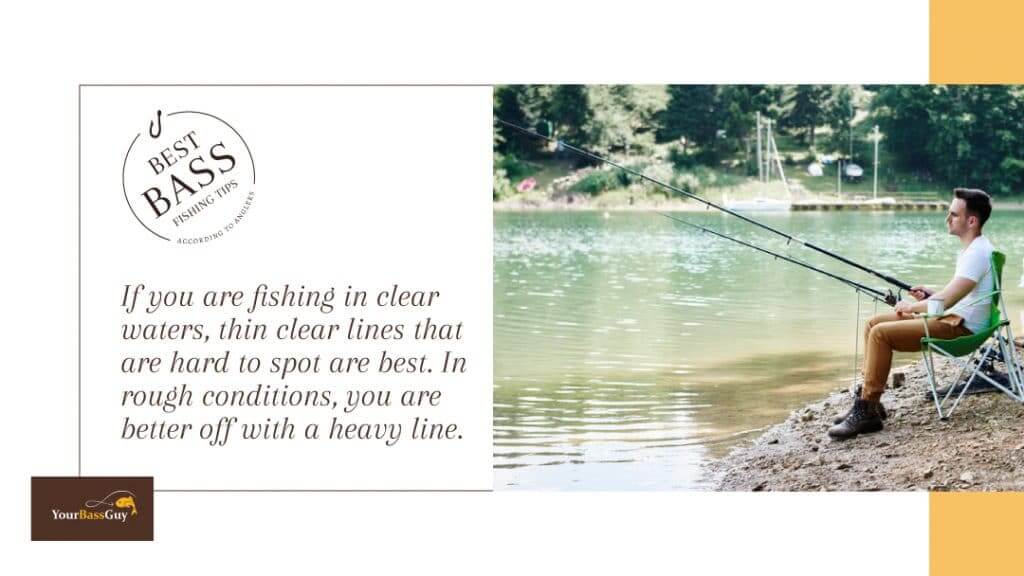
3. Lures and Bait
In fishing, it is the simple things that distinguish the seasoned anglers from novices. One key element to consider is the bait and bass fishing lures you use. This goes beyond the simple hook and worm tactic that your grandfather swears on. Different types of fish are attracted to different lures and baits. The same is true for one species of fish in different fishing zones and conditions.
Typically, bass are attracted to bait and lures that resemble the prey they feed on. Bass feed on a wide range of prey such as small fish, insects, lizards, small aquatic birds, and frogs.
Therefore, as you prepare for your fishing trip, find out the type of prey bass in that area feed on as well as the weather conditions to expect.
With this information, you will be able to make informed decisions on which lures to pack in your favorite 3-tray tackle box. However, since there are hundreds of different types of lures and fishing conditions can change in minutes, you may be forced to adjust your strategy mid-session.
With this in mind, it is best to pack a wide variety of lures. This will give you the much-needed flexibility every bass angler needs.
Some of the baits every bass angler should have include:
- Soft plastic bait- Suitable for almost all bass
- Spare fishing rod holders
- Lipless crankbait– Suitable in shallow waters and when bass are actively feeding
- Jigs– A bait that offers versatility, jigheads can be used in both shallow and deep areas
- Finesse worm- Adds versatility to the effectiveness of soft plastic baits
- Deep diving crank- Arguably the best option when fishing in deep water or areas with long grass
- Spinnerbait– Often irresistible to bass and are effective in laydowns and around a flooded brush
- Swimbait – An ideal bait for going after larger fish that forage on smaller fish.
- Frog– If you are fishing in an area with vegetation, frog baits may be just what you need
- Square bill- When it comes to catching big bass, square bills are your best bet
- Jerkbait– Bass love feeding on minnows and jerkbaits mimic injured minnows which is too good a deal for bass to pass
- Topwater walking bait: These baits are versatile and mimic struggling baitfish
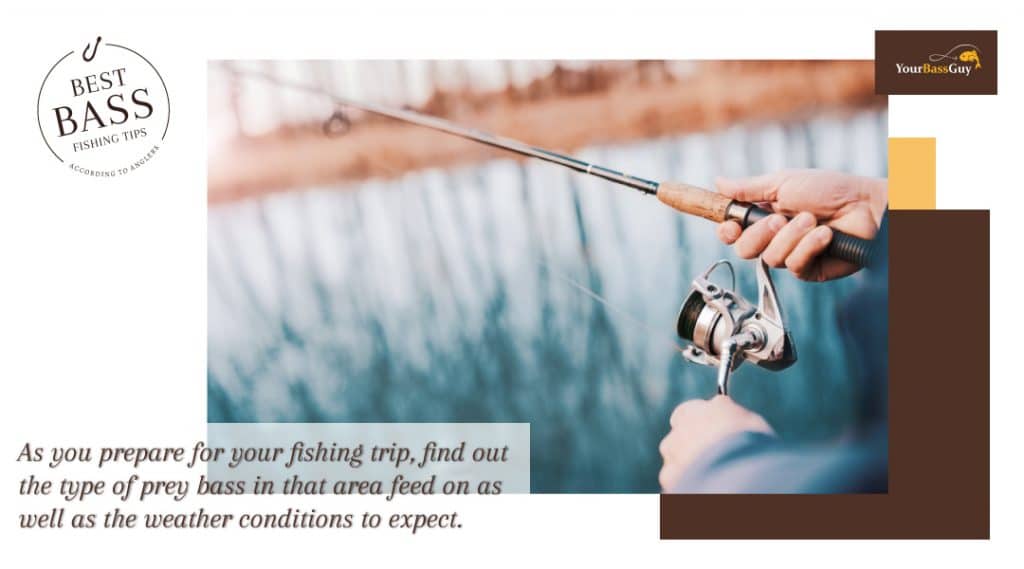
4. Needle Nose Pliers
Needle nose pliers are the unsung heroes in every angler’s bass tackle backpack. Nonetheless, they are just as important as any other item you need. Needle nose pliers come in handy when a smallmouth bass swallows a fishing lure on a drop shot and has sharp teeth to great you after you bring it in. With the pliers, you will spare yourself the bite marks as you will not need to reach down the bass’ mouth with your hand to remove the lure.
5. Sinkers or Weights
Sinkers and weights play a crucial role when angling for largemouth bass. They allow your hook and bait to sink deeper in the water, thus increasing your chances of making a catch. Sinkers come in different sizes and shapes, and are usually made of metals such as lead. However, for environmental purposes, lead sinkers have been outlawed in several states.
As you choose a sinker, take into consideration the rig you will use as these two items go hand in hand. However, it is best to stick to smaller sized sinkers as they offer better results. This is because, with a lighter sinker, your rig will be more sensitive.
In general, sinkers can be grouped into two types. These are fixed and sliding sinkers. Fixed sinkers are twisted, tied, or pinched onto the line. Rubber-core and split shot sinkers are the most common types of fixed sinkers.
If you want a bass to feel minimum resistance when biting the bait, use sliding sinkers as they settle on the bottom, allowing the line to slide through it. Bullet and egg sinkers are the best examples of sliding sinkers. Bullet sinkers are suitable when you are fishing in areas with weeds and are usually used with plastic worms. On the other hand, egg sinkers are ideal when fishing with live bait.
Sinkers come in different types, which are suitable for various rigs, baits, and conditions. To ensure you are prepared for whichever scenario you encounter on your fishing excursion, be sure to carry extra sinkers.
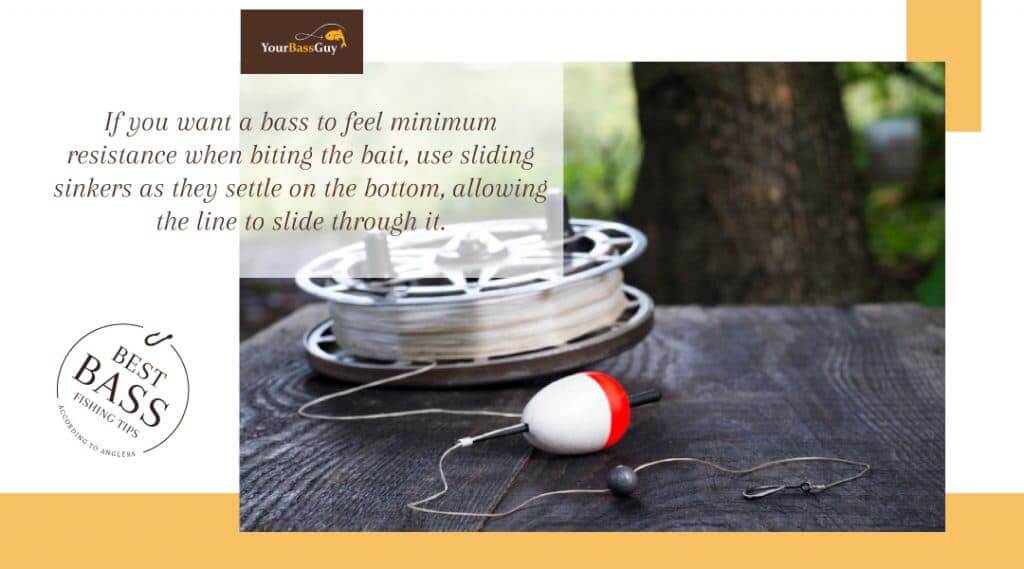
6. Stringer
How many bass do you fancy yourself catching the next time you are on the water? Whether it’s five, ten, or just two, you definitely want your fish to be fresh when heading back. Instead of exposing your catch to the sun, which will cause it to begin decomposing and smelling, have a stringer in your tackle box.
With a stringer, you will be able to keep the bass you catch in water, thus preserving their freshness. When it comes to stringers, you have two options; chain stringers and single line stringers. Chain stringers have clasps for each fish you catch. Single line stringers are made of a nylon rope and with a metal ring and another piece of metal on opposite ends. The piece of metal is run through the gills of the fish then connected to the ring.
7. Bobbers
One of the main attributes a fisher should have is patience as you can go for extended periods without catching anything. As such, it is easy to lose focus and not notice when there’s a fish you need to reel in. To avoid any catch from slipping away, it’s best to incorporate the use of bobbers, also known as floaters.
Floaters, as the name suggests, are designed to stay above the water up until a fish bites and begins pulling. This makes it easy to know when to jump in action to reel your catch. As with most fishing equipment, bobbers also come in different types. The white plastic and round red bobbers are the most common.
Though round bobbers are easy to attach as you only have to clip them to the line, you cannot cast your line deep when using them. Alternatively, you can use a slip bobber, which allows you to cast your hook deeper in water. However, you should be prepared to put in extra effort to rig a slip bobber.

8. Knives
Knives come in handy when you are fishing, as there are different situations that you will be required to cut something. This could be cutting your line after it gets caught up in something in the water or to remove a hook that’s stuck in the mouth of a fish. In such situations, you will struggle to get the job done without a knife. Many anglers prefer a folding multi-tool like a Gerber which is easy to grab and easy to stowaway.
Be sure to sharpen your knife before the trip to avoid unnecessary disappointments. Additionally, you should also carry nail clippers as they can also be used to cut a fishing line.
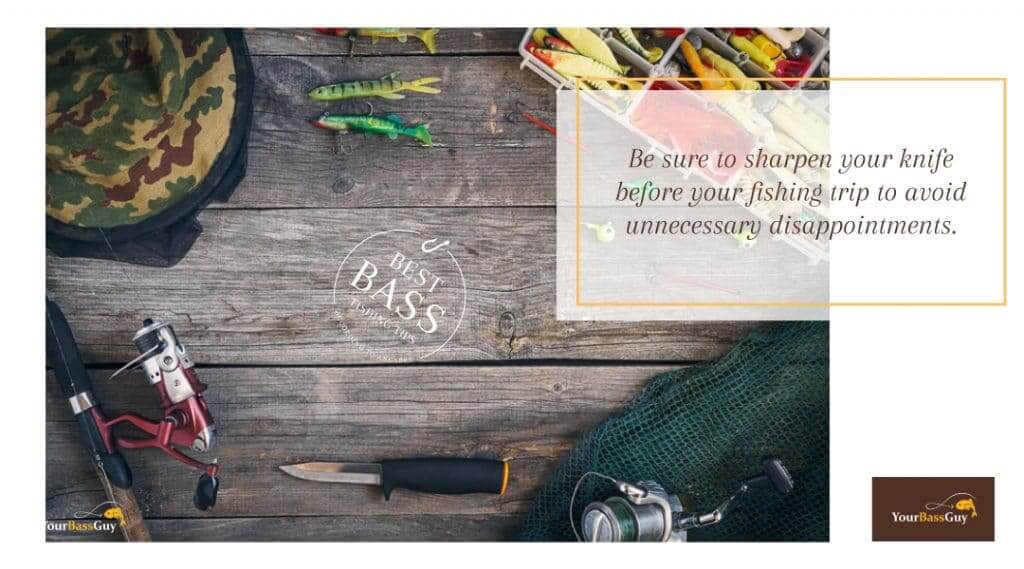
9. Polarized Sunglasses
If you are planning on going fishing, you are likely going to spend most of the day on the water. During the day when the sun is bright, the light reflecting on the water can cause glare, which will make it difficult for you to see.
If you cannot see clearly, you will not be able to pick out the best fishing spots as your ability to peek into the water to spot fish will be limited. This is why you should make a habit of carrying polarized sunglasses. Polarized sunglasses are better than non-polarized ones as they have additional benefits for people who love fishing. Such benefits include:
- Reduce glare
- Enhance clarity and contrast which allows you to see fish beneath the water
- Offer protection against UVA and UVB rays
Polarized glasses come in different colors. However, for a bass angler, these colors are not meant to serve as a fashion statement but to aid your fishing efforts. If you are fishing in an area where glare is very high, you are better off with grey, blue, or green lenses. For environments that are hazy and cloudy, amber lenses are suitable. For areas where there is little light, carry sunglasses with yellow or orange lenses.
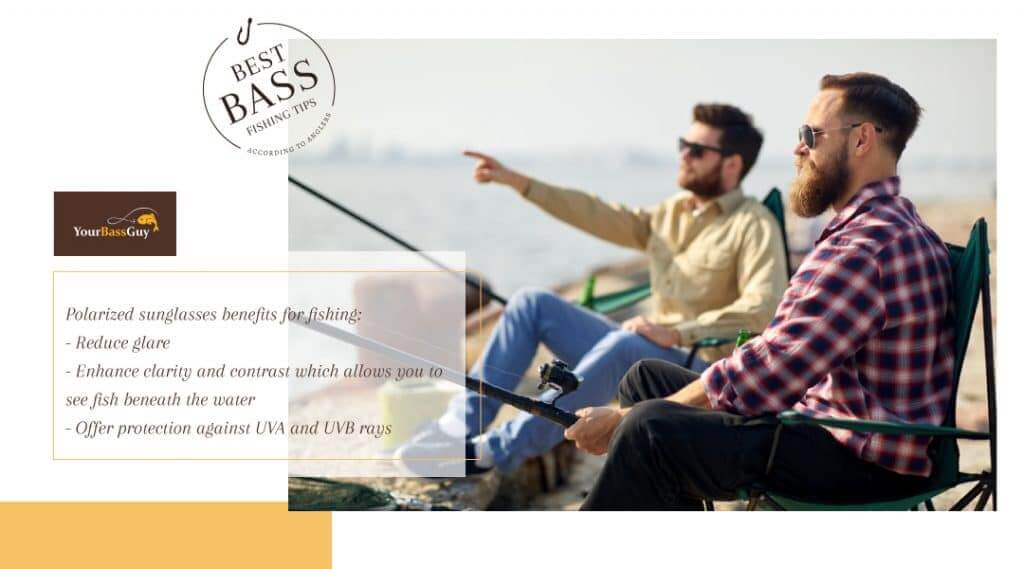
10. Poncho or Raincoat
The weather can be quite unpredictable at times. A day can turn from calm and sunny to cloudy and rainy in a matter of minutes. If it begins raining when you are out in the water, it can quickly become uncomfortable if you have light clothing.
As a seasoned angler, or one soon to be, you know that rain makes bass active and reduces their level of alertness. As such, with a change of strategy, you can catch plenty of fish when it is raining. However, it will be challenging to continue fishing if you are directly exposed to the rain. As such, it is best to pack a raincoat. If a regular raincoat seems too big, at least ensure you have a small plastic poncho in your utility box.

11. Small First Aid Kit
From time to time, you are likely to suffer minor fishing injuries. From boats to kayaks and with the best of intentions, people still get hurt. When this happens, you want to address the injury quickly to prevent excessive blood loss or infection, and then resume fishing.
For this, you will need a first aid kit. It does not have to be fully stocked, but it should not lack basics such as:
- Band-aids
- Small bandages
- Pain relief ointment
- Antibiotics
- Waterproof medical tape
- Sanitizer
With the above items, there is no need to interrupt your fishing trip because of minor fishing-related injuries.
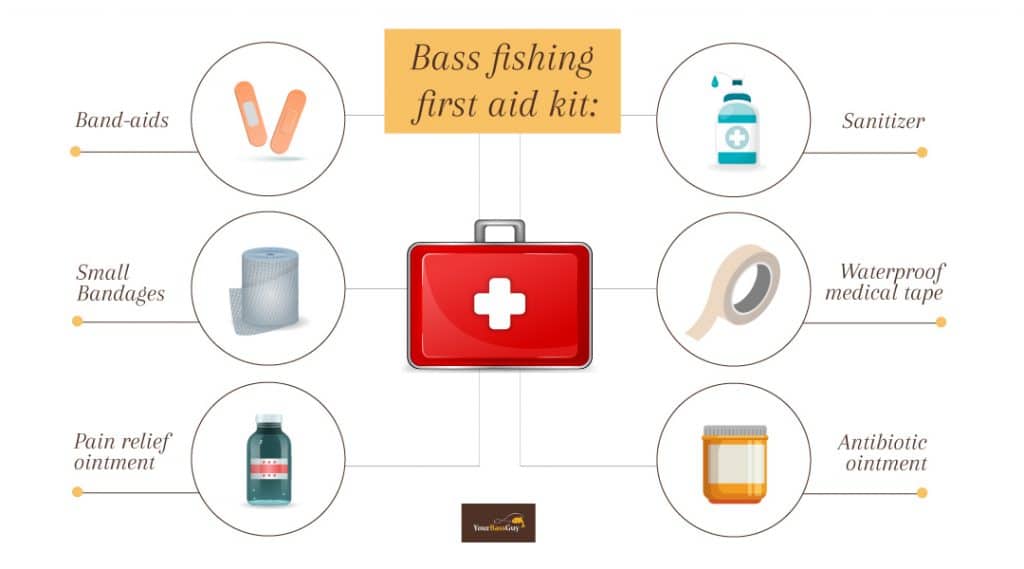
12. Sunscreen
It is very refreshing to bask in the sun for a few minutes. However, extended exposure to the sun is dangerous. You can get sunburns due to the heat, and extended exposure to ultraviolet rays from the sun is the leading cause of skin cancer. To safeguard your health and avoid leaving the water with a face that resembles a burnt oven mitt, make sure you pack some sunscreen in your tackle box.
13. Bug Repellent
Fishing is an outdoor activity, and some of the things you are likely to encounter there are bugs. Though you will be far from the reach of most when you are on the water, you can encounter a swarm of mosquitos. This is especially likely if you are fishing in stagnant water as mosquitos breed there.
One mosquito alone can be very infuriating. Imagine how uncomfortable it can be if hundreds surround you. As such, it is wise to carry a bug repellent every time you are out fishing.

14. Fishing License
Fishing is regulated, and one requires a license for it. Fishing without a license will make you liable to pay fines and face additional legal action depending on the number of fish you catch. Buying a recreational fishing license is easy and can be done online or at local retail agents in every state.
15. Pack Some Small Bites
Though some may scoff at putting a full meal in their fishing backpacks, you should at least pack a few snacks to ensure you are not too hungry while fishing.

Bass Angling Is Where Patient Skill Meets Great Fishing Gear
Whether you are new to bass fishing or you are a seasoned angler, the gear you use makes all the difference. Therefore, it is crucial to learn about the best equipment and make the necessary investments, and with time you will catch more and more bass. And that is why I am here: to be your easy internet guide to making this hobby as rewarding as possible for you.
So what are your MUST HAVE items in your tackle box? Add your ideas to the comments and I will update the list as we all contribute.

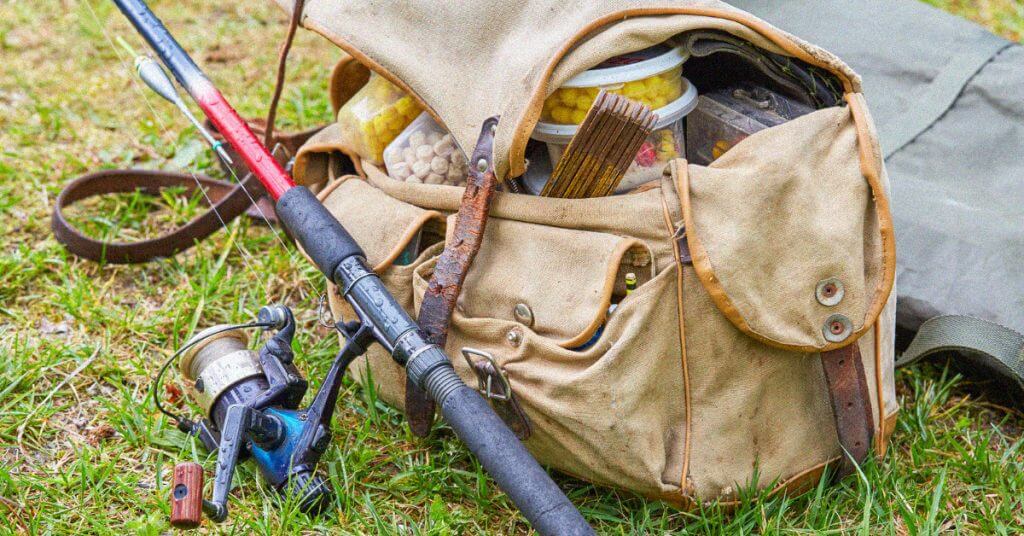



Congrats!
Nice article, can I share a link in my blog?
Yes you can, Gustavo :) And thanks for dropping by!